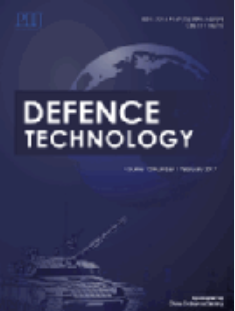高空环境下爆炸高度的三点路径预测
IF 5.9
Q1 ENGINEERING, MULTIDISCIPLINARY
引用次数: 0
摘要
准确预测三点路径对于分析爆炸载荷和评估爆炸高度的破坏效果至关重要。通常采用描述常温常压环境下TP路径的经验模型;但是,在某些配置中,例如在高海拔(HAs),环境可能涉及低温和低压条件。本研究利用图像爆发法、反射极性分析和量纲分析,建立了减压和降温条件下TP路径的理论预测模型。通过数值模拟和实验数据对模型的精度进行了评价。结果表明,该预测模型能有效地评估温度和压力降低条件下的TP路径,大多数预测偏差在±15%以内。发现TP高度随海拔升高而增加。当海拔从0 m上升到10000 m时,在1.5 m、2.0 m、2.5 m和3.0 m的爆发高度,平均TP高度分别增加了61.7%、87.9%、109.0%和134.3%。此外,HA环境下TP高度的变化与相应的减压条件下观察到的变化非常接近。在HA环境中,只需要考虑低压条件对TP路径的影响,环境低温对TP路径的影响很小。本文章由计算机程序翻译,如有差异,请以英文原文为准。
Triple point path prediction for height of burst explosion in high-altitude environment
Accurately forecasting the triple point (TP) path is essential for analyzing blast loads and assessing the destructive effectiveness of the height of burst explosion. Empirical models that describe the TP path under normal temperature and pressure environments are commonly employed; however, in certain configurations, such as at high-altitudes (HAs), the environment may involve low temperature and pressure conditions. The present study develops a theoretical prediction model for the TP path under reduced pressure and temperature conditions, utilizing the image bursts method, reflected polar analysis, and dimensional analysis. The model's accuracy is evaluated through numerical simulations and experimental data. Results indicate that the prediction model effectively evaluates the TP path under diminished temperature and pressure conditions, with most predictions falling within a ±15% deviation. It was found that the TP height increases with altitude. As the altitude rises from 0 m to 10,000 m, the average TP height increases by 61.7%, 87.9%, 109.0%, and 134.3% for the scaled height of burst of 1.5 m, 2.0 m, 2.5 m, and 3.0 m, respectively. Moreover, the variation in TP height under HA environments closely mirrors that observed under corresponding reduced pressure conditions. In HA environments, only the effect of low-pressure conditions on the TP path needs to be considered, as the environmental low-temperature has a minimal effect.
求助全文
通过发布文献求助,成功后即可免费获取论文全文。
去求助
来源期刊

Defence Technology(防务技术)
Mechanical Engineering, Control and Systems Engineering, Industrial and Manufacturing Engineering
CiteScore
8.70
自引率
0.00%
发文量
728
审稿时长
25 days
期刊介绍:
Defence Technology, a peer reviewed journal, is published monthly and aims to become the best international academic exchange platform for the research related to defence technology. It publishes original research papers having direct bearing on defence, with a balanced coverage on analytical, experimental, numerical simulation and applied investigations. It covers various disciplines of science, technology and engineering.
 求助内容:
求助内容: 应助结果提醒方式:
应助结果提醒方式:


